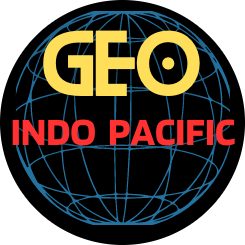
Beijing appears to be lowering the threshold for direct military confrontation while reinforcing its claims through civilian institutions.
Since 2025, tensions in the South China Sea have intensified, with the Scarborough Shoal (Huangyan Dao in Chinese) once again at the center of China–Philippines frictions. After the August 11 standoff that damaged two Chinese vessels, Beijing began moving toward a more structured approach to maritime governance at the shoal. In September, the State Council approved the Huangyan Dao National Nature Reserve, covering 3,523.67 hectares and identifying the surrounding coral-reef ecosystem as its primary conservation target.
More than a conservation initiative, the move signals Beijing’s intent to shift the basis of its posture at the shoal from episodic maritime friction to continuous legal and administrative regulation. By formalizing its jurisdiction through environmental law, China appears to be lowering the threshold for direct military confrontation while reinforcing its claims through civilian institutions.
The move reflected a shift from ad hoc maritime response to institutional regulation. It followed Manila’s 2024 Maritime Zones Act and Archipelagic Sea Lanes Act, which incorporated Scarborough Shoal into the Philippines’ claimed national waters, and Beijing’s Public Notice on the Baselines of the Territorial Sea of Huangyan Dao later that year. Together, these actions point to the growing legalization of the dispute: both governments are embedding territorial disputes within domestic legal frameworks, managing the stakes for future crisis management.
Beijing’s decision at Scarborough Shoal represents not a retreat from assertiveness but a fusion of legal regulation and administrative control. The establishment of the reserve reflects China’s effort to integrate governance, law, and environmental management into a single framework for exercising sovereignty. It seeks to transform physical control into legal and bureaucratic permanence while invoking regulation and conservation to justify its actions in contested waters.
Governance Through Law and Environmental Framing
The establishment of the Huangyan Dao National Nature Reserve followed the 2016 South China Sea Arbitration (Philippines v. China) and fits a broader pattern of legal and administrative consolidation of maritime claims. The timing was also shaped by parallel legislative steps.
In 2024, Manila passed the Maritime Zones Act and Archipelagic Sea Lanes Act, formally incorporating Scarborough Shoal and Second Thomas Shoal into its domestic maritime map. Beijing responded later in the year with the Public Notice on the Baselines of the Territorial Sea of Huangyan Dao, further formalizing its jurisdictional position. This year’s standoff near the shoal, coupled with Philippine statements about possible involvement in a Taiwan contingency, reinforced China’s perception of rising strategic risk and hastened the transition from tactical control to regulatory assertion.
Under the Regulations of the People’s Republic of China on Nature Reserves (revised 2011), the State Council may designate zones where development is restricted and access – domestic or foreign – requires approval. In practice, these boundaries define the operational extent of Chinese jurisdiction. Unauthorized entry by foreign vessels or fishing boats would violate Chinese domestic law. Beijing justifies enforcement under Articles 56 and 73 of the United Nations Convention on the Law of the Sea (UNCLOS), which grant coastal states resource management authority in their exclusive economic zones – though the application of these provisions to disputed areas remains contested.
The environmental framing of the reserve also carries narrative weight. The South China Sea’s ecological degradation has drawn increasing international scrutiny, with Western media often blaming Chinese fishing for coral destruction. Other regional studies, however, point to destructive practices such as cyanide fishing and the use of fish-aggregating devices by multiple coastal actors. Within this context, China’s 2024 Assessment Report on the Ecological and Environmental Conditions of the Waters around Huangyan Dao and the subsequent creation of the reserve form part of a broader strategy to legitimize administrative control through the language of environmental governance.
By designating Scarborough Shoal as a national nature reserve – China’s most restrictive protection category – Beijing has institutionalized a dual mechanism: it has embedded its claim in domestic regulation while using conservation discourse to moderate external criticism. Whether this regulatory approach helps stabilize the dispute or instead embeds it deeper in legal contention remains uncertain.
Implications, Risks, and Strategic Meaning
The creation of the nature reserve at Scarborough Shoal is likely to reshape China-Philippines relations and influence the strategic balance in the South China Sea.
At the bilateral level, institutionalized management at the shoal will probably end the fluid pattern of gray zone interaction that had provided both sides tactical flexibility. Once enforcement begins, the operational space for Philippine fishermen will narrow, heightening domestic pressure on Manila to respond through diplomatic protests or coordination with security partners. Should the Philippines, as ASEAN chair in 2026, use regional platforms to internationalize the issue, the dispute could spill over into broader ASEAN–China dynamics.
The framework, however, still leaves limited space for cooperation. The Regulations on Nature Reserves permit scientific and educational activities within experimental zones, offering a narrow legal basis for joint research or fisheries management. Such technical engagement, if insulated from sovereignty politics, could serve as a stabilizing channel amid persistent friction.
Regionally, the reserve serves as a pilot for Beijing’s “low-intensity, sustainability-oriented” model of sovereignty consolidation, anchored in regulation and administration rather than overt power projection. Similar mechanisms could, in principle, be extended to other contested features such as Second Thomas Shoal or Reed Bank, signaling an incremental move from physical to legal control.
This approach, however, carries clear risks. While the move is framed in terms of ecological governance, it will nonetheless be perceived as an expansion of administrative control, prompting Manila and its partners to reinforce maritime cooperation and deterrence. Implementation will also test Beijing’s balance between enforcement and diplomacy. Excessive policing could escalate confrontation, while under-enforcement would undermine the credibility of the new regulations. At the regional level, unilateral regulatory measures may unsettle ASEAN states and complicate ongoing negotiations on the Code of Conduct in the South China Sea.
Ultimately, the reserve crystallizes China’s evolving strategy, from reactive posture to proactive rule-making. It exposes the central tension in Beijing’s maritime approach, between pursuing predictability through law and administration and maintaining flexibility at sea. At the same time, it marks a calculated effort to de-escalate the likelihood of short-term military confrontation at Scarborough Shoal by embedding China’s claims within legal and bureaucratic systems. Its long-term significance will depend on how it constrains Manila’s responses, and also on whether it advances a more durable and credible framework for managing competition in the South China Sea.




